TIRES
TIRES - THE ONLY THING BETWEEN YOU AND THE ROAD
Snow Tires?
Question: Is it wise to buy snow tires and if so what types would be best?
Answer: If you spend most of the winter in the city, you probably don’t need to be concerned with snow tires. For as few times as the roads in town get snow packed, snow tires won’t be worth using. However, if you go to the mountains a couple times a month or are a regular skier, snow tires would be a good investment.
There are four variations of snow tires: all-season tires, snow tires, studded snow tires and ice tires. All have advantages and disadvantages.
All Season Tires
Advantages
They can be left on the car year round. They are better in snow than highway tires but not a whole lot better.
Disadvantages
They aren’t as good on dry pavement as a highway tires and aren’t as good in snow as snow tires.
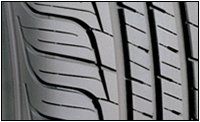
Snow Tires
Advantages
They grip very well in fresh snow and better than all season tires in packed snow. They last longer than ice tires.
Disadvantages
They should be changed out in the summer, they don’t do well on ice and if you sell your car you usually can’t use them on your next car.
Studded Snow Tires
Advantages
Studded tires do very well on snow, packed snow and ice.
Disadvantages
When the pavement is dry they are very noisy and damage streets. In some states they are illegal or can only be used in certain months. The cost of studding adds about $15 per tire.
Ice Tires
Ice tires give even better traction than studded snow tires in all conditions. Each tread block has about 12 sipes or cuts in it, in effect giving each tread block 12 edges to grip with. Ice tires aren’t noisy like studded snow tires but they should be taken off after the snow season. Part of the reason they have such good traction is they are made of a soft rubber compound but this also causes them to wear out somewhat sooner.
Some tire stores will sipe or cut regular tires, but if you’re going to spend extra why not get the ones that were engineered for ice to begin with? The current charge to sipe is around $13 per tire.
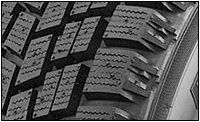
Conclusion
Regardless of if you’re going to use snow tires or not this winter, be sure your tires have good tread. If your tires are worn, now is the time to have them replaced.
All Season Tires
A good starting point in any discussion about tires is; when should they be replaced? The Federal Motor Vehicle Safety Standard 109 was implemented in 1968. Among other things, it required that “wear bars” be molded into the tire tread to show when the tread wore down to 2/32 of an inch. When the wear bar is even with the tread the tires are considered to be worn out.
Another way to measure tread depth is the old penny test. Here you hold a penny in the tread with Lincoln’s head toward the center. If all of old Abe’s head can be seen, the tread is 2/32” or less.
With time we’ve experienced inflation and now it is suggested to do the same test with a quarter. When a quarter is used to measure tread depth, it reveals that there is less than 4/32” of tread left when all of George Washington’s head is visible. Honest Abe versus “I cannot tell a lie” George. Who’s right?
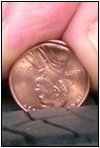
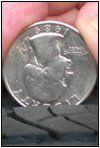
Test Results
Here are some test results done on a 2006 BMW 325i and a 2006 Ford F150 2WD stopping from 70 mph on a road with a dime’s thickness of water on it. Three tests were done; one with new tires, one with tires at 4/32” of tread and finally 2/32” of tread.
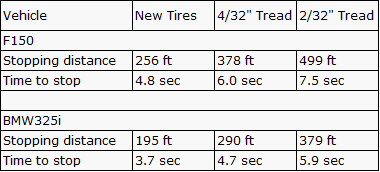
In the BMW test with the 2/32" of tread, the car was still going 55 mph at the point where the car had stopped completely with new tires. As you can see with 2/32" of tread it takes nearly twice as long to stop as with new tires and nearly 50% farther than the tires with 4/32" of tread.
Fortunately, in Colorado, the roads aren’t wet a majority of the time, but depending on the season it may be wise to replace tires when they get down to 4/32"
Don’t be penny wise and pound foolish. Replace your tires on time. That’s my 2 cents worth. Or is it 26 cents worth?
